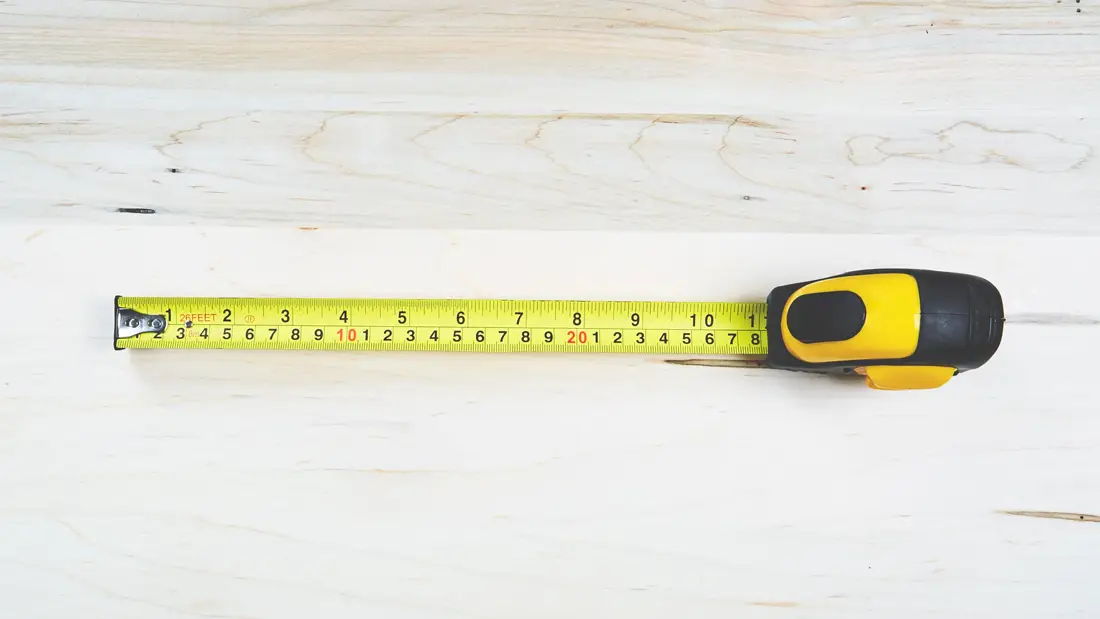The SaaS world is a marathon, not a sprint. And to win the growth race, you can't ignore the power of KPIs. But let's be real – navigating CAC, MRR, and churn rates can feel like trying to solve a Rubik's Cube blindfolded. The good news? There's a secret weapon to supercharge your metrics and catapult your SaaS to the top: UX Design. Forget the myth of "just make it pretty" – a killer UX is a growth engine, transforming casual visitors into loyal customers and sending your recurring revenue soaring. In this article, we're breaking down 9 essential SaaS KPIs and showing you how UX design can move the needle at every stage of your journey. Ready to level up your growth game? Let's dive in!
Table of contents
SaaS KPIs for Customer Acquisition: Your Guide to Growth
Attracting new customers is great, but reeling them in at the right time *without* blowing your marketing budget? Now that’s what we call a win. This is where SaaS KPIs step up to the plate, acting as your compass to navigate the vast sea of customer acquisition.
1. Customer Acquisition Cost (CAC): Your SaaS BFF (Or Is It?)
CAC is the name of the game – it tells you how much you’re spending on average to convince a new user to open their wallet. A sky-high CAC can torpedo your profitability faster than you can say “Series A funding,” while an optimized CAC paves the road to sustainable growth.
How to Calculate CAC for Your SaaS:
CAC = Total Sales and Marketing Expenses / Number of Customers Acquired
UX Design: Your Secret Weapon to Slash CAC:
- Streamline Your Conversion Funnel: A frictionless, intuitive user experience is like a well-oiled machine, guiding users smoothly towards conversion.
- Crystallize Your Messaging: Make your SaaS value proposition and benefits crystal clear from the get-go. A convinced user is a converting user!
- Simplify Sign-Ups: Ditch those clunky forms! Keep them short, sweet, and offer social login options (Facebook, Google, Apple – you know the drill) to make life easier for your future users.
2. Website Conversion Rate: Turn Clicks into Customers
Your website is your 24/7 storefront and your hardest-working salesperson. But it needs to be converting those visitors into leads! Your conversion rate is the percentage of visitors who take a desired action – signing up for a free trial, requesting a demo, downloading that must-have ebook, you get the idea. In the SaaS world, a website that converts is a steady stream of piping hot, qualified leads!
How to Calculate Your SaaS Website Conversion Rate:
Conversion Rate = (Number of Conversions / Number of Website Visitors) x 100
UX Design Fuels Conversions:
- Persuasive Design: It's not just about looking pretty. Your website should guide users towards action with clear visual hierarchy, eye-catching imagery, and persuasive language that compels them to click that button.
- Calls-to-Action That Pop: Your CTAs need to scream "Click me!" Use action verbs, contrasting colors, and strategic placement to make them stand out.
- Simplify Your Forms: Nobody likes filling out endless fields. Keep forms short and relevant to minimize drop-offs.
Dive deeper into UX writing and how the right words can transform your conversion rates.
3. Average Sales Cycle Length: Speed Demons Win
In the fast-paced world of SaaS, speed is king. The shorter your sales cycle, the faster you're generating revenue. Your goal? Convince those prospects to hit the "buy" button quickly and confidently.
How to Calculate Your SaaS Sales Cycle Length:
Average Sales Cycle Length = (Sum of All Sales Cycle Lengths / Total Number of Sales)
UX Design as Your Sales Accelerator:
- Crystal-Clear Content: Your prospects need to grasp your SaaS value and its benefits – fast. Think concise copy, self-explanatory visuals, and real-world examples that resonate.
- Demos That Wow: An interactive demo is worth a thousand words (and maybe even a thousand subscriptions). Show your SaaS in action, highlight key features, and let them picture themselves using it.
- Customer Testimonials That Inspire: Never underestimate the power of social proof. Showcase authentic and relatable customer testimonials to build trust and credibility.
SaaS KPIs for Measuring Customer Retention
Attracting new customers is awesome, but keeping them around? That’s the golden ticket to SaaS success! Loyal customers mean predictable recurring revenue and a steady flow of referrals. Time to focus on retention – it’s the other half of the growth equation.
4. Churn Rate: The SaaS Boogeyman
Churn is the percentage of users who decide to jump ship over a specific period. High churn? That's your cue to hit the panic button (just kidding... sort of). It often means customers aren’t happy, don’t see the value in your SaaS, or are eyeing up the competition. Yeesh! In any case, a well-crafted UX design is a proven way to combat churn and boost retention.
How to Calculate Your SaaS Monthly Churn Rate:
Churn Rate = (Number of Customers Lost During the Month / Number of Customers at the Beginning of the Month) x 100
How UX Design Comes to the Rescue:
- Ease of Use: A SaaS that's easy peasy to use, with an intuitive interface and accessible features, means fewer frustrated users and more happy subscribers.
- High Perceived Value: Effective UX highlights your SaaS's benefits and helps users make the most of its features. A satisfied customer is a customer who sticks around!
- Stellar Customer Support: Make sure your help resources are easy to find and actually helpful. Think a comprehensive FAQ section, a responsive live chat system, or crystal-clear user documentation.
UX Tip: Invest in an interactive and personalized onboarding experience to boost engagement from day one. Clearly explain key features, offer helpful tutorials, and don't be afraid to sprinkle in some gamification magic to keep them coming back for more.
5. Customer Lifetime Value (CLTV): The Holy Grail of SaaS
CLTV represents the total value a customer brings to your business throughout their entire "lifetime" (from the moment they sign up until they bid you farewell). Boosting CLTV translates to higher profitability and a more sustainable SaaS business model. Cha-ching!
How to Calculate CLTV for Your SaaS:
CLTV = Average Revenue Per User (ARPU) / Churn Rate (as a decimal)
Or, for a More Detailed Calculation:
CLTV = Average Purchase Value x Average Purchase Frequency x Average Customer Lifespan
UX Design to the Rescue:
- Features They Can't Live Without: Design a product that solves their problems so well they can't imagine life without it. That’s how you keep users coming back for more.
- Loyalty Programs: Reward your loyal users! Think exclusive offers, discounts, early access to features – everyone loves a little appreciation.
- Educational Content: Help your users get the most out of your SaaS with valuable resources like tutorials, webinars, and insightful blog posts. An informed customer is a happy customer!
6. Net Promoter Score (NPS): Let Your Fans Do the Talking
Your NPS is a customer satisfaction metric that measures how likely your users are to recommend your SaaS to their network. A high NPS means you’ve got a crew of happy campers spreading the good word – and that, my friend, is marketing gold.
How to Calculate NPS for Your SaaS:
NPS = % of Promoters - % of Detractors
(Promoters give a score of 9-10, Detractors 0-6, and Passives 7-8 on a satisfaction scale of 0 to 10)
UX Design: The Referral Engine:
- Create Memorable Experiences: Exceptional UX sticks with people. It's the kind of experience that makes them want to shout about your SaaS from the rooftops. Sweat the small stuff – it makes a difference!
- Close the Feedback Loop: Give users easy ways to share feedback through satisfaction surveys, polls, contact forms, etc. It shows you’re listening and constantly improving.
- Delight With the Unexpected: A little something extra (a small gift, a bonus feature, a personalized message) can go a long way in turning a satisfied customer into a raving fan.
UX research is your secret weapon for uncovering user needs and expectations, leading to higher satisfaction and a glowing NPS score.
SaaS KPIs for Recurring Revenue: Watch Your MRR Soar
Acquisition, retention...it’s all well and good, but at the end of the day, what makes your SaaS business thrive is that sweet, sweet recurring revenue. And to keep those numbers climbing, there's one metric you need to master: MRR (Monthly Recurring Revenue).
7. Monthly Recurring Revenue (MRR): The Heartbeat of Your SaaS
MRR is the lifeblood of your SaaS, measuring the predictable monthly revenue generated from your subscriptions. This key metric helps you track financial health, forecast future earnings, and make strategic decisions to keep the growth engine humming.
How to Calculate MRR for Your SaaS:
MRR = Number of Paying Customers x Average Revenue Per User (ARPU)
How Acquisition & Retention Fuel MRR Growth:
- Acquisition: More paying customers = more MRR. Makes sense, right?
- Retention: Keep those existing customers happy (and reduce churn), and watch your MRR stabilize and become more predictable over time.
UX Tip: Offer flexible and scalable pricing plans to meet the needs of various customer segments and encourage long-term commitments. A customer who feels like they're getting a fair deal for what they need is a customer who's more likely to stick around.
The HEART framework is a great way to measure the impact of UX on key SaaS indicators, including your precious MRR.
8. MRR Growth Rate: Your Growth Spurt
As the name suggests, your MRR growth rate measures how quickly your recurring revenue is increasing month-over-month. A healthy growth rate is a telltale sign of a thriving SaaS business that's attracting new users and keeping its current ones happy.
How to Calculate Your SaaS MRR Growth Rate:
MRR Growth Rate = [(Current Month's MRR - Previous Month's MRR) / Previous Month's MRR] x 100
The Magic Equation: Stellar UX = Happy Customers = MRR Growth
A seamless UX directly contributes to higher customer satisfaction, which, in turn, fuels MRR growth. It’s a beautiful, profitable cycle.
9. Average Revenue Per User (ARPU): It’s All About the Benjamins
ARPU represents the average revenue you generate per paying user each month. Increasing ARPU is all about maximizing the value you're extracting from each customer, leading to higher profitability and fatter margins.
How to Calculate ARPU for Your SaaS:
ARPU = Total Monthly Revenue / Total Number of Paying Users
UX Design: Your Upselling and Cross-Selling Wingman:
- Highlight Premium Feature Value: Use clear, concise messaging to explain the tangible benefits of upgrading to a higher-tier plan.
- Offer Tempting Free Trials: Let users experience the awesomeness of your premium features firsthand with a limited-time free trial.
- Make Upgrading Frictionless: Ensure the upgrade process is so smooth, they won't hesitate to take the plunge.
Get inspired by the best UX practices of B2C SaaS (or vice-versa) to optimize onboarding, conversion, and retention for your B2B users – all of which contribute to a healthier ARPU.
Conclusion
There you have it! KPIs are the essential tools for navigating the exciting, sometimes-overwhelming world of SaaS growth. From attracting those first customers to maximizing your MRR, every stage can be measured, analyzed, and optimized through User Testing. KPIs also serve as a common language to create strategic alignment between business and technical teams, transforming objectives into a shared vision.
Remember, behind every KPI is an opportunity to improve your user experience. Check out our selection of the best UX/UI analysis tools for collecting relevant data and steering your strategy. By putting UX Design at the forefront, you create a win-win: a better UX leads to better KPIs, which ultimately translates to sustainable, profitable growth for your SaaS.
So what are you waiting for? Put these tips into practice, keep a close eye on those metrics, and watch your SaaS soar!



